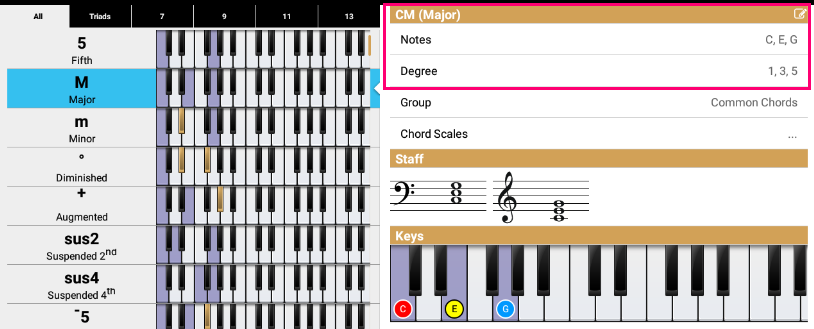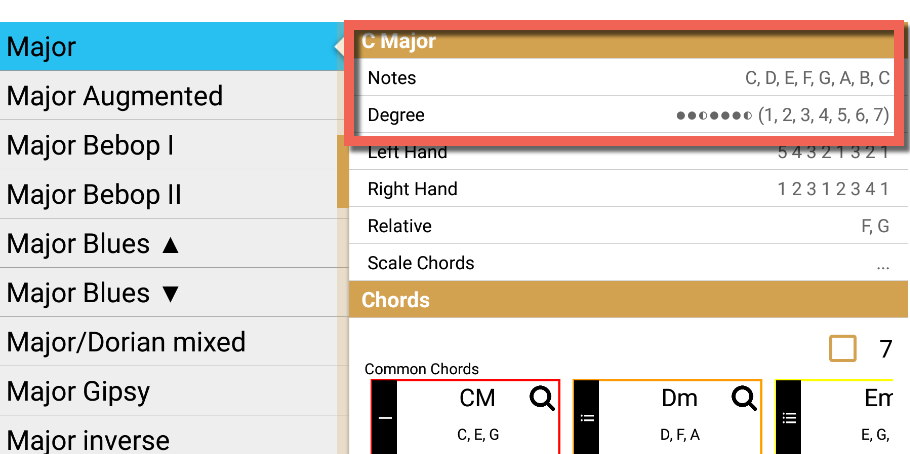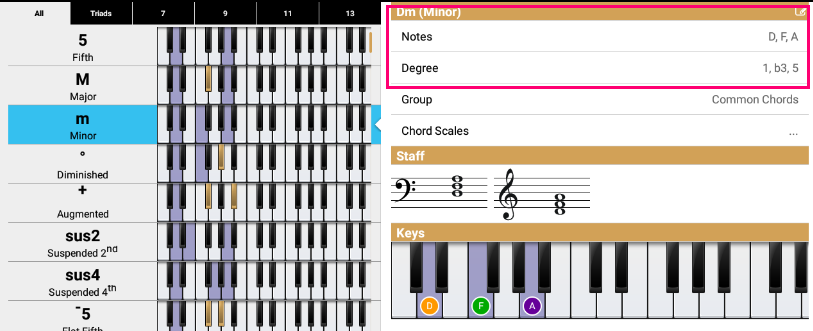From Classical to Flamenco to Pop
What is the Andalusian cadence?
The Andalusian cadence is the name of a chord progression that was made popular in flamenco music. This progression is made up of four chords that descend stepwise (from the vi to the V to the IV and finally the III chords. This progression can be traced back to the Renaissance period, and the beauty of the exotic sound created by this chord sequence it one of the most popular progressions in classical music and popular music.
Before we examine this Andalusian cadence further we need to discuss a few terms to make the explanation easier to understand.
Scales
Notes can be arranged in a specific sequence called a scale. Different sequences create different types (or qualities) of scales. To keep it simple we’ll look at the C major scale.
The C major scale is the usual starting point of any music theory discussion because this scale sequence does not use any accidentals (sharps or flats). If you’re sitting at a piano (a piano app is fine) then simply find C. The piano keyboard is arranged in a series of white keys and black keys. The black keys are in groups of two and three. Directly to the left of the group of two black keys is the C note. Play that note and move from left to right one white key at a time until you reach the next C. This produces the familiar sound of the major scale and, in this case, the C major scale.
Next, these sequences that form scales can be assigned a formula. The formula for the major scale is 1–2–3–4–5–6–7–8. The chart below will make it easier to visualize:
Regular whole numbers are used to identify the note and its function: for example:
- C is the 1 note,
- D is the 2 note,
- G is the 5 note, etc.
Chords
Chords are three or more notes played at the same time. You can create a chord by stacking every other note in the scale; for example, C–E–G create a C chord.
We’re building the chord on the C so we begin on C, then skip the D, add the E, skip the F, and add the G to get C–E–G. These three notes are played together to form the C chord.

Here’s the D minor chord:
Next, the E minor chord:

You can use this system for each note (or degree) in the scale. But, in order to determine when we are speaking about the chord and not the note we need to use Roman numerals.


The I–IV–V chords are major that’s why they’re uppercase. The ii–iii–vi chords are minor and that’s why they’re lowercase. The vii° is diminished which is why it’s lowercase with the degree symbol.
How does the Andalusian cadence work?
The Andalusian cadence is referred to as the vi–V–IV–III progression because it naturally occurs in the vi, V, and IV chords of a major scale. The iii chord is minor and, with a simple adjustment, the iii chord can be made major and then represented with the uppercase Roman numeral III.
However, many contemporary musicians don’t think of it in those terms. They will think of the first chord as the one chord as in the table below. Notice how it changes the functions of the subsequent chords.
A Minor: i, bVII, bVI, V.
Author’s note: A formal discussion regarding the aspects of music theory is beyond the scope of this article; however, certain terms are mentioned and explained for the purpose of this article.
In this case, the A is the one chord and it’s minor. This will create a chord progression that is diatonic (means that it belongs to the key or naturally occurs in that key) to the A natural minor scale with the exception of the E chord. Again, an alteration is used to turn the naturally occurring E minor chord into an E major chord. This alteration changes the scale from A natural minor to A Harmonic minor throughout the duration of the E major chord.
15 Popular Songs Using the Andalusian Cadence
These songs are listed alphabetically by song title and used here simply to illustrate the variety of situations that the Andalusian progression can appear in pop music.
- Babe, I’m Gonna Leave You (Led Zeppelin)
- China Girl (David Bowie)
- Don’t Let Me Be Misunderstood (Nina Simone)
- Feel Good Inc (The Gorillaz)
- Genie in a Bottle (Christina Aguilera)
- Good Vibrations (The Beach Boys)
- Hazy Shade of Winter (Paul Simon)
- Hit the Road, Jack (Ray Charles)
- Like a Hurricane (Neil Young)
- Maneater (Hall and Oates)
- Objection (Shakira)
- Runaway (Del Shannon)
- Stray Cat Strut (The Stray Cats)
- Sultans of Swing (Dire Straits)
- Wild World (Cat Stevens)
How to Use It in Your Own Songwriting
The best way to understand songwriting is by analyzing other songs—as in the list above. For example, “Hit the Road, Jack” is the same Andalusian cadence over and over, whereas, “Stray Cat Strut” uses the progression in the verse and, for the chorus, uses the same progression in a different key.
How to Analyze Songs
- Pick one of your favorite songs. It’s usually best to start with something that you’re already familiar with. A favorite song usually offers you something that you already know by heart. It’s also something that holds no surprises and you’ll be enthusiastic about learning more.
- Identify the song structure: intro, verse, chorus, etc. The Beatles were masters of this. They played cover versions of songs that they liked at the very beginning of their career. Then, they wrote songs based on what they knew—variations of songs they covered. Analyze their songwriting and notice how it developed from album to album.
- Determine the chord progressions that are in each part of the song. Songs are made up of patterns, these patterns are chord progressions that repeat. Sometimes with a twist or slight alteration, but there will always be a pattern. The verse may begin on the I chord and the chorus may begin on the V chord or vice versa.
In the early stages you may find this difficult and time consuming. But, after a while you’ll become quite proficient at it. So much so, that you will develop your ears and musicianship to the point that you can determine song structures and chord progressions by simply listening to a song. You also can download Free Piano Companion app and experiment with different ideas.
UPDATE: One of our community user created an amazing remix:


